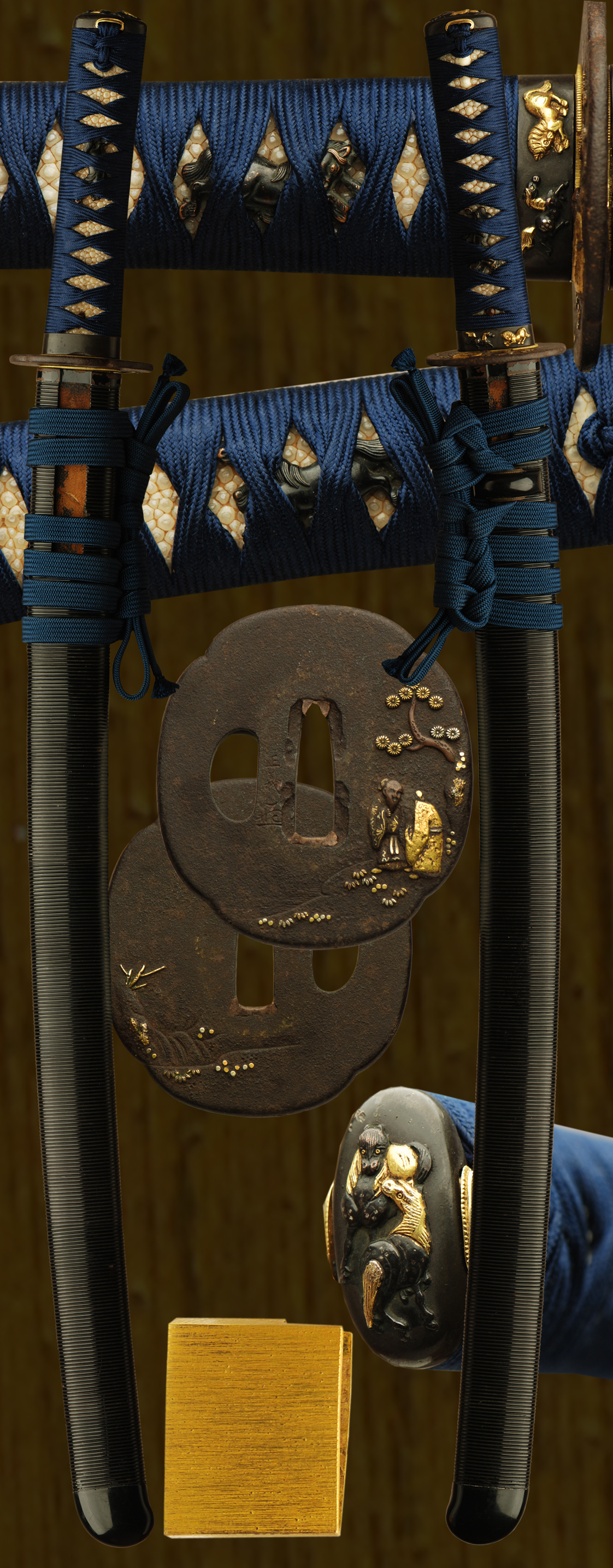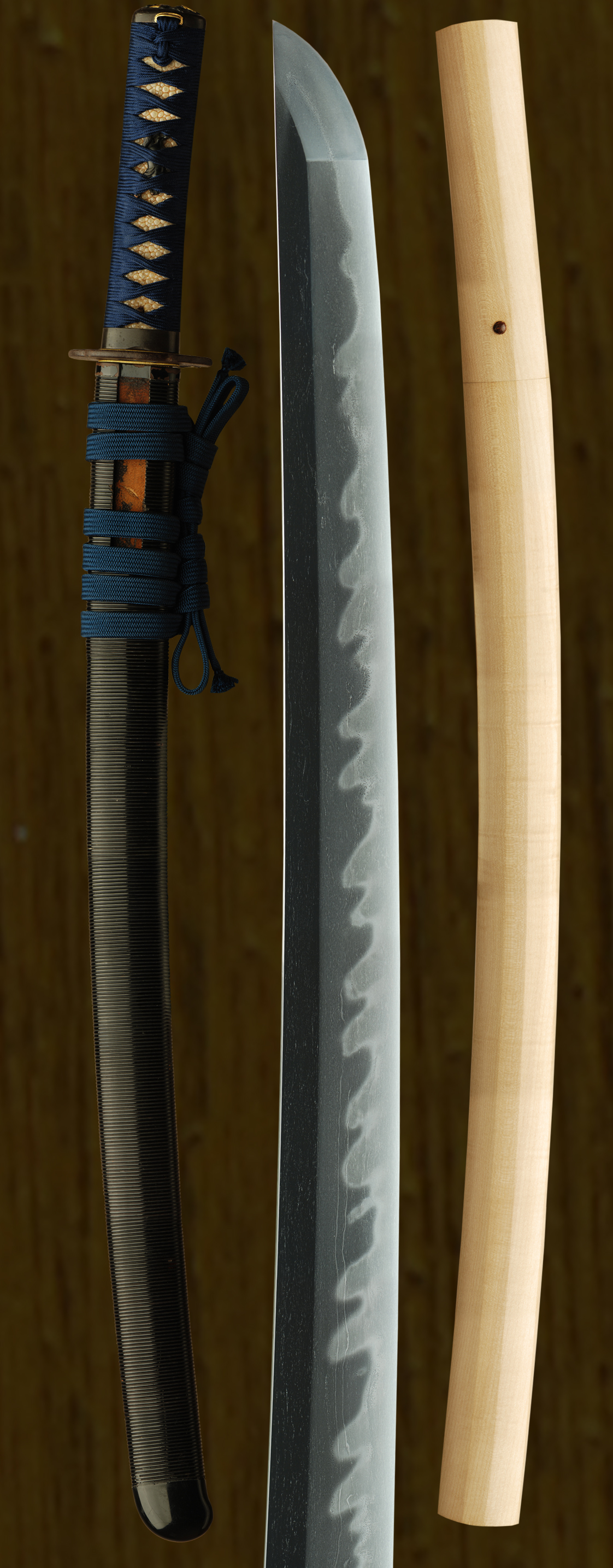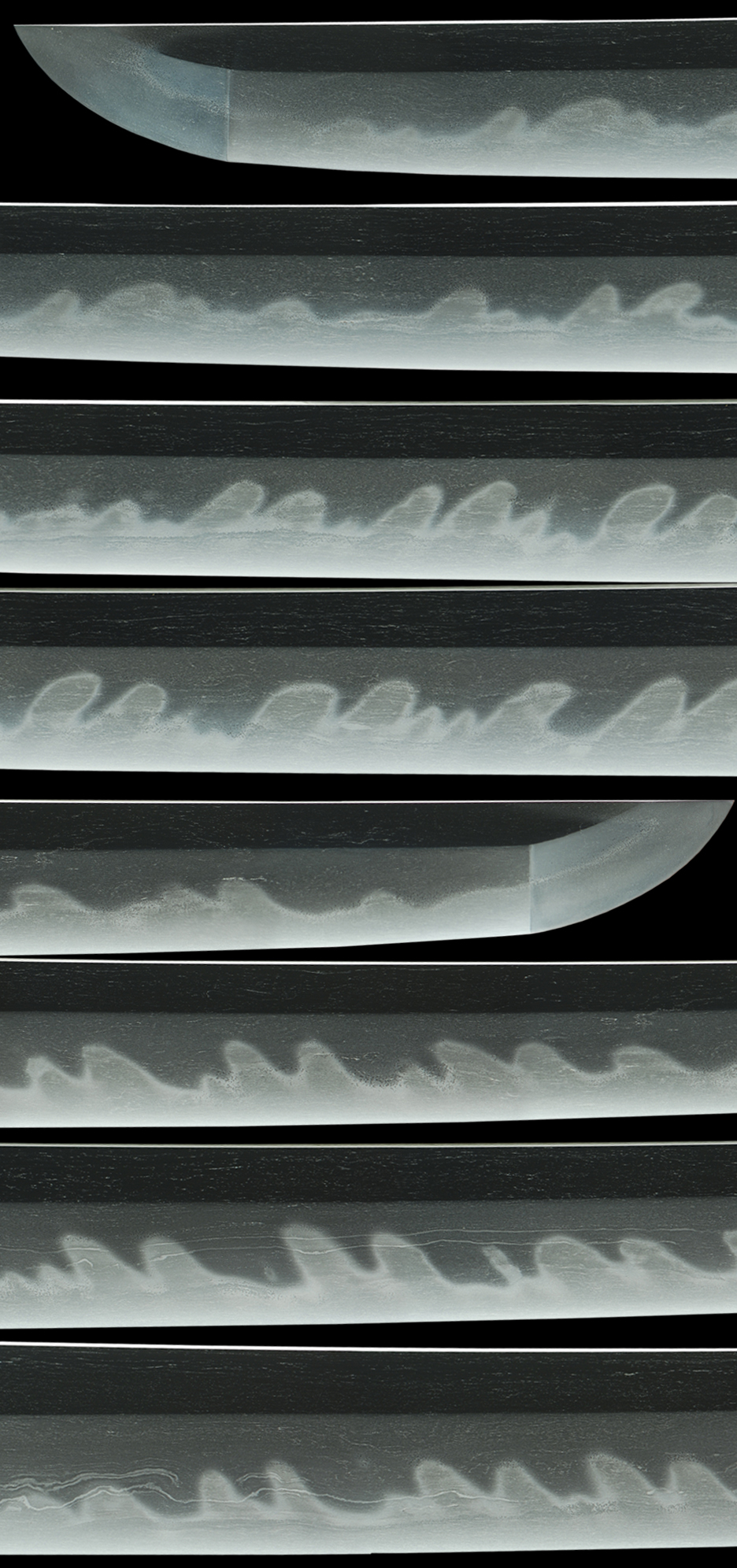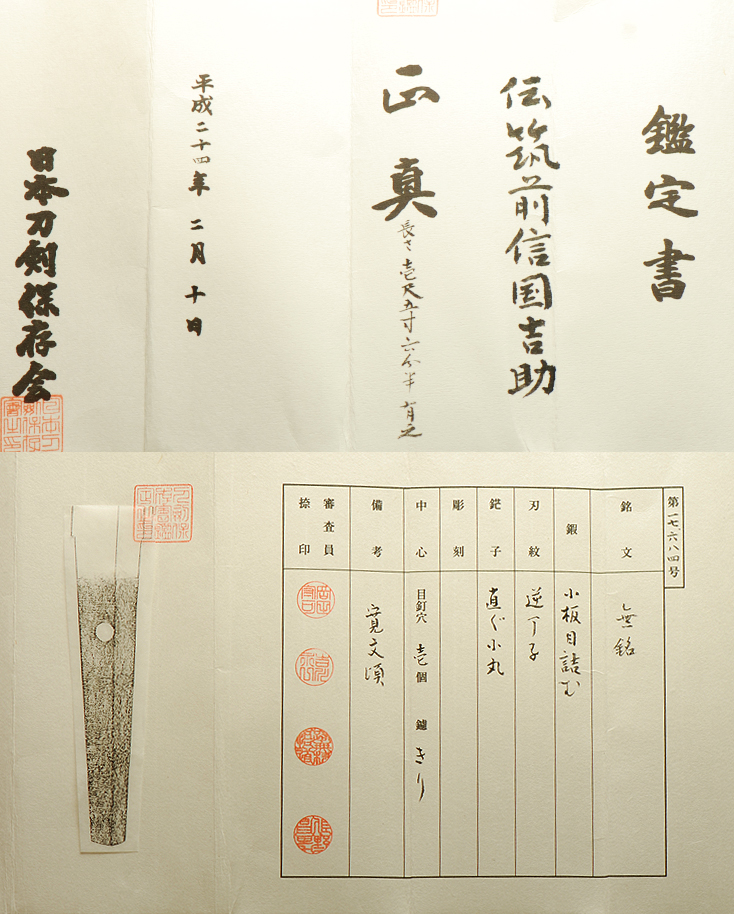The Chikuzen Nobukuni at the Edo period during the Kanbun era is continuation of the Muromachi period.
Chikuzen-ju Yoshisada, Nobukuni Yoshisuke of which this sword is attributed to and Nobukuni-zaemon Yoshikane were active at same time.
An affordable exquisite package for the connoisseur’s of collecting. This blade is fully polished and mounted with papers attributing it to CHIKUZEN NOBUKUNI YOSHISUKE. The sword is a beautiful saka gunome-midare just loaded with hataraki. There is ashi, sunagashi. a thick nioi-guchi, kinsuji. The hada is layed in ji-nie with much ara-nie peppering the hamon especially found in the valleys of the GUNOME. The hada is a true itame and mokume blend with masame. There is chikei and the boshi is finished in O-maru.
The koshirae is a dazzling horse theme with fuchi, kashira and menuki of horses finished in shakudo and gold. The tsuba is a Mokko shape in iron with a picturesque setting of scholars under a tree signed and finished in gold and silver. The sageo and tsuka ito are a matching cobalt blue with a large nodule same(rayskin). The saya is beautiful and narrowly ribbed finished in black lacquer.
Chikuzen Nobukuni History:
Chikuzen Nobukuni is a long line extending from Koto times. The Sengoku labored all sword schools until the Momoyama of robust unification breathed new life into the arts and styles of all of Japan. The young masters coming from Ten-sho, such as Horikawa Kunihiro, traveling to Kyoto, would create a new world of strong new Momoyama styles. The “Shinto” sword-period grew directly from Hideyoshi’s Momoyama Unification. By order of Emperor GoDai-Go, Kusunoki Masashige restored the throne. The Hojo capitol, at Kamakura burned in 1333.
Seizing the moment, however, his general, Ashikaga Takauji rebelled and was beaten back to the Southern Island of Kyushu where the Hosokawa, Shiba and Otomo joined his cause. The Otomo fought the Imperial support of southern landholders, the Kikuchi and took control of five Kyushu provinces.
Takauji and his allies won Kyoto and resided there, holding governmental power for the new Ashikaga Shogunate.
Kyoto has the conservative Rai sword school and the Otomo invited Rai and the Nobukuni school stylists to their home territories.
YOSHISADA brings RYOKAI School, and the NOBUKUNI school master, SADAMITSU brings NOBUKUNI / RAI styles to KYUSHU
- Mei: Mumei/unsigned NTHK attribution to “Chikuzen Nobukuni Yoshisuke”
- Date: Kanbun (1661)
- Nagasa: 18-5/8 inches
- Sori: 7.5 mm
- Width at the ha-machi: 29.5 mm
- Width at the yokote: 19.6 mm
- Thickness at the mune-machi: 6.1 mm
- Construction: Shinogi zukuri
- Mune: Iori
- Nakago: Ubu
- Kitae: Itame/mokume
- Hamon: Midare Gunome
- Boshi: Maru
- Condition: excellent polish
(shipping and insurance included)
Email us if your interested in this item and remember to include the order number for this item: fss-786.
Click to Enlarge Image
Click to Enlarge Image
kantei-sho (鑑定書) – Appraisal
Den Chikuzen Nobukuni Yoshisuke (伝筑前信国吉助)
shōshin (正真) – Authentic
nagasa 1 shaku 5 sun 6 bu han kore ari (長さ壱尺五寸六分半有之) – Blade length 47.4 cm
Heisei 24 nen 2 gatsu 10 nichi (平成二十四年二月十日) – February 10, 2018
Nihon Tōken Hozon Kai (日本刀剣保存会) – NTHK
No 17,684
meibun (銘文) – Signature: mumei
kitae (鍛) – Forging: dense ko-itame
hamon (刃紋) – Hardening: saka-chōji
bōshi (鋩子) – Hardening in tip: sugu with a ko-maru-kaeri
chōkoku (彫刻) – Engravings:
nakago (中心) – Tang: mekugi-ana (目釘穴) 1, yasurime (鑢): kiri
bikō (備考) – Remarks: around Kanbun (寛文, 1661-1673)
shinsa’in natsu’in (審査員捺印) – Seals of Judges: 4 seals
For Sale


























